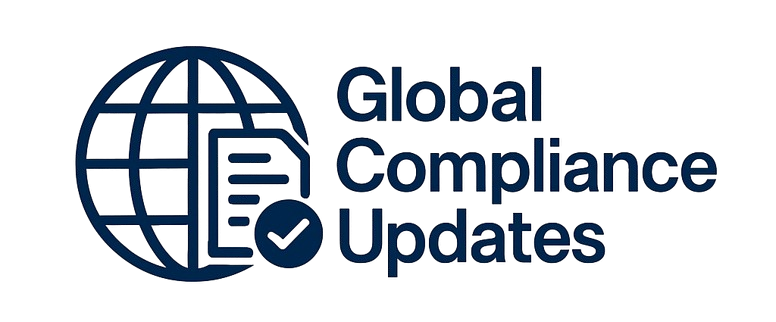Workplaces have made progress towards GLBT equality yet GLBT workers still go to work every day with fear that they might lose their jobs because of who they love and who they are. There is no federal law protecting the GLB community from workplace discrimination and harassment. There is confusion among organizations as to whether the federal civil rights law Title VII protects gay, lesbian, and bisexual (GLB) employees.The EEOC and several courts clearly have stated that GLB employees are protected by Title VII however other courts have disagreed. Recently, the EEOC has filed its first two sexual orientation lawsuits. These two cases demonstrate the EEOC’s commitment to moving forward to protect GLB employees from discrimination under Title VII. Transgender employees are protected under the Civil Rights Act Title VII because their discrimination is “because of sex” yet discrimination lawsuits continue to arise as to what bathroom and locker room transgender employees can use while at work. Roughly 90% of transgender and 40% of GLB employees experience workplace discrimination according to some surveys. Heterosexism – the cultural expectation that everyone is, should be, or would prefer to be heterosexual – is the established norm of the workplace; a commonplace bias in American institutions. This bias gets played out in both overt and covert behaviors which in turn negatively impact the organizational culture. However, there have been organizational successes in diminishing the biases. There is an opportunity for your organization to create strategies to ensure GLBT inclusion in your workforce
WHY SHOULD YOU ATTEND?
All organizations strive to meet their mission and goals. Most organizations employee GLBT workers. When GLBT workers are welcomed and included, without fear as to their sexual orientation and gender identity, the organization is more productive, has better morale, is healthier, and GLBT employees are not discriminated against. When the welcome and inclusive environment is not a reality, productivity drops, morale decreases, and the organization is at risk for liability. The organization’s climate and culture are compromised leading to increased turnover and difficulty hiring GLBT employees.
AREA COVERED
- To examine GLBT perceptions and stereotypes
- To describe the impact on GLBT employees and the workplace when they fear being who they are at work
- To discuss transgender
- To establish gender transition guidelines
- To identify organization practices to minimize discrimination
- To discuss the outcome of GLBT supportive policies and practices
- To develop organization and individual strategies for GLBT inclusion into the workforce
LEARNING OBJECTIVES
- The Implicit Association Test (online)
- Recruitment and Retention
- Heterosexism assumptions
- International LGBT considerations
- Marketing and Advertising
- Restroom access for transgender employees
- Guidelines for the transitioning of a transgender employee
- Responding to negative reactions to LGBT inclusion
- Workplace dress codes, transgender employees, and gender non-conforming employees
WHO WILL BENEFIT?
- CEO
- COO
- CFO
- VP of HR
- All HR directors, managers, and generalists
- Supervisors
- Managers
- Director of Risk Management
All organizations strive to meet their mission and goals. Most organizations employee GLBT workers. When GLBT workers are welcomed and included, without fear as to their sexual orientation and gender identity, the organization is more productive, has better morale, is healthier, and GLBT employees are not discriminated against. When the welcome and inclusive environment is not a reality, productivity drops, morale decreases, and the organization is at risk for liability. The organization’s climate and culture are compromised leading to increased turnover and difficulty hiring GLBT employees.
- To examine GLBT perceptions and stereotypes
- To describe the impact on GLBT employees and the workplace when they fear being who they are at work
- To discuss transgender
- To establish gender transition guidelines
- To identify organization practices to minimize discrimination
- To discuss the outcome of GLBT supportive policies and practices
- To develop organization and individual strategies for GLBT inclusion into the workforce
- The Implicit Association Test (online)
- Recruitment and Retention
- Heterosexism assumptions
- International LGBT considerations
- Marketing and Advertising
- Restroom access for transgender employees
- Guidelines for the transitioning of a transgender employee
- Responding to negative reactions to LGBT inclusion
- Workplace dress codes, transgender employees, and gender non-conforming employees
- CEO
- COO
- CFO
- VP of HR
- All HR directors, managers, and generalists
- Supervisors
- Managers
- Director of Risk Management
Speaker Profile
 Dr. Susan Strauss
Dr. Susan Strauss
Dr. Susan Strauss is a national and international speaker, trainer and consultant. Her specialty areas include management/leadership development, organization development, communication, and harassment and bullying. She is an expert witness for discrimination and harassment lawsuits. She trains and consults with business, education, healthcare, law, and government organizations from both the public and private sector. Dr. Strauss has authored over 30 book chapters, books, and articles in professional journals. She has been featured on 20/20, CBS Evening News, and other television and radio programs as well as interviewed for newspaper and journal articles. She has her doctorate in organizational leadership, is …
Upcoming Webinars

ChatGPT and Project Management: Leveraging AI for Project M…

Workplace Investigations 101: How to Conduct your Investiga…

Project Management for administrative professionals

The Monte Carlo Simulations in Excel for Risky Investments

Onboarding is NOT Orientation - How to Improve the New Empl…

Dealing With Difficult People: At Work & In Life

Transform Data into Insights: A Beginners Guide to Excel Pi…

Construction Lending And Real Credit Administration: Evalua…

Understanding Accounting for non - Accounting professionals

Harassment, Bullying, Gossip, Confrontational and Disruptiv…

New Form 1099 Reporting Requirements: 2025 Compliance Update

Human Error Reduction Techniques for Floor Supervisors

HR Metrics and Analytics 2025 - Update on Strategic Plannin…

Treating Employees Like Adults: Discipline versus Empowerme…

7 Ways To Beat Burnout: Without Quitting Your Job


How to Write Procedures to Avoid Human Errors

Handbook Overhaul 2026: Compliance, OBBB Act & Beyond

FDA Proposes Framework to Advance Credibility of AI Models

Ethical Terminations: Navigating Employee Exits with Legal …

Understanding EBITDA – Definition, Formula & Calculation

Project Management for Non-Project Managers - Scheduling yo…

4-Hour Virtual Seminar on Hidden Secrets of Selling & Marke…

Validation Statistics for Non-Statisticians

Data Integrity and Privacy: Compliance with 21 CFR Part 11,…


The Alphabet Soup: When the FMLA, ADA, COBRA, and Workers' …

Talent Management: How to Leverage AI and ChatGPT Tools for…


Offboarding with Care: Conducting Legal & Ethical Employee …

2-Hour Virtual Seminar on How to Conduct an Internal Harass…

Payments Fraud Detect & Prevent Check, ACH and P-Card Schem…

Managing Toxic & Other Employees Who have Attitude Issues



Reduce Stress in the Workplace: Effective Ways to Handle Co…





Excel - Pivot Tables - The Key To Modern Data Analysis and …
